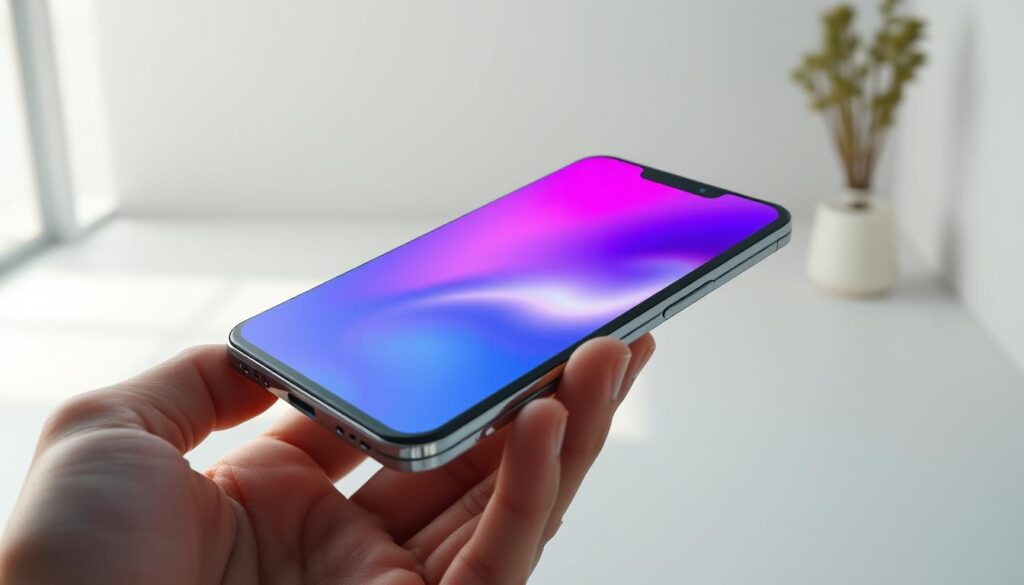Tech enthusiasts are buzzing about the next-generation flagship smartphone set to launch in early 2026. Early leaks suggest major improvements in battery capacity, charging speeds, and camera technology. Industry experts predict this device will redefine premium mobile experiences with its cutting-edge hardware.
The model is expected to debut alongside two other variants in January 2026, continuing the brand’s annual release pattern. Indian consumers might see prices starting around ₹1.59 lakh for the base configuration, though final costs could shift before launch. These projections align with previous flagship pricing trends in the region.
Camera upgrades appear particularly promising, with rumors of revolutionary sensor technology and enhanced low-light performance. Power users will likely appreciate the rumored 16GB RAM capacity and optimized thermal management system. Such features position this device as a potential game-changer for mobile photography and multitasking.
Key Takeaways
- Expected January 2026 launch for the premium smartphone series
- Base model could cost approximately ₹1,59,990 in India
- Significant camera hardware improvements leaked
- Enhanced battery life and faster charging capabilities
- 16GB RAM configuration rumored for top-tier variant
Upcoming Release Timeline and Price in India
Consumers in India are gearing up for a major smartphone release early next year. Industry leaks point to January 2026 as the probable launch month for the premium series. Three models are expected to debut simultaneously, continuing the brand’s pattern of unveiling flagship devices during winter tech events.

Expected Launch Dates and Events
The official reveal will likely occur at a dedicated Unpacked event, similar to previous years. Tech analysts suggest the showcase might align with CES 2026 or other global exhibitions. Early adopters could access pre-order deals within days of the announcement, with retail availability starting by February.
Price Predictions and Variant Details
Indian pricing estimates show significant variation between sources. The base model with 12GB RAM and 256GB storage might cost ₹1,29,999, while upgraded configurations could reach ₹1,59,990. Storage options will reportedly include 512GB and 1TB versions for power users needing extra space.
Color choices will feature sophisticated metallic finishes like Phantom Black and Jade Green. Titanium Silverblue is rumored as an exclusive option for higher-tier models. These aesthetic decisions aim to complement the device’s premium build quality while offering personalization.
Design and Build Innovations
Mobile engineers appear ready to challenge conventional smartphone aesthetics with bold structural changes. Leaked schematics reveal a pill-shaped camera cluster replacing the familiar floating array, signaling the most dramatic visual overhaul in recent years. This redesign aligns with evolving trends in premium devices while addressing user feedback about camera module protrusion.

Revolutionary Camera Island and Display Features
The rumored camera layout draws direct inspiration from foldable models, creating cross-device design harmony within the brand’s ecosystem. Early renders suggest a seamless transition between the rear panel and raised camera housing. Display improvements focus on both form and function:
| Feature | New Model | Predecessor |
|---|---|---|
| Screen Size | 6.9″ OLED | 6.8″ OLED |
| Refresh Rate | 144Hz Adaptive | 120Hz Static |
| Bezel Width | 1.2mm | 1.8mm |
Curved edges return with refined ergonomics, reducing accidental touches while maintaining immersive viewing angles. The 144Hz panel could set new standards for mobile gaming responsiveness and video playback smoothness.
Durability Enhancements and Materials
Structural upgrades aim to balance premium aesthetics with everyday resilience. A reinforced aluminum-titanium alloy frame reportedly withstands 25% more pressure than previous iterations. “The materials science here pushes smartphone durability into new territory,” notes Mumbai-based tech analyst Riya Kapoor.
Corning’s latest Gorilla Glass variant promises improved scratch resistance without compromising touch sensitivity. Matte finishes on select color options may help minimize fingerprint smudges – a common complaint about glossy-backed flagships.
Samsung Galaxy S26 Ultra: Performance and Camera Upgrades
The next flagship device is poised to deliver groundbreaking advancements in both processing power and imaging capabilities. Early engineering samples reveal industry-leading hardware designed to handle intensive tasks while maintaining energy efficiency. These improvements could redefine expectations for premium mobile devices.
Next-Gen Processor and Enhanced Battery Life
At its core lies the rumored Snapdragon 8 Elite 2 chipset, built using a cutting-edge 3nm manufacturing process. This architecture promises 35% better power efficiency compared to previous models. The thermal management system features an expanded vapor cooling chamber that covers 40% more surface area, crucial for maintaining performance during extended gaming sessions.
Powering these components is a substantial 5500mAh battery – the largest ever in this series. Initial tests suggest 22 hours of continuous video playback on medium brightness. Charging speeds remain speculative, but insiders hint at revolutionary power management software to extend battery health.
| Component | Specification | Improvement |
|---|---|---|
| Processor | Snapdragon 8 Elite 2 | 3nm architecture |
| Cooling System | Vapor Chamber | 40% larger surface |
| Memory | 24GB LPDDR5X | 10.7Gbps speed |
Advanced Camera System and Telephoto Capabilities
Photography enthusiasts will appreciate the 200MP primary sensor with pixel-binning technology for crystal-clear shots. The quad-camera array includes a 50MP ultra-wide lens and dual zoom solutions – a 50MP periscope for 10x optical magnification and 12MP telephoto for portrait perfection.
Low-light performance sees dramatic improvements through larger 2.4μm pixels in the main sensor. Computational photography algorithms now process images 25% faster, enabling real-time editing without lag. “This camera system blurs the line between smartphones and professional gear,” notes Delhi-based tech reviewer Arjun Mehta.
Software Features, Charging Technology, and User Experience
Next-gen AI integration and rapid charging solutions could redefine smartphone usability in 2026. The flagship device is rumored to combine adaptive software with advanced power management, creating a seamless experience for Indian users.
Latest OneUI and Android Integration
Running Android 16 with a refined OneUI 8.5 overlay, the device may introduce context-aware automation that learns from daily routines. Camera tools could automatically adjust settings based on lighting conditions, while voice commands might control multiple smart home devices simultaneously.
- Real-time language translation during video calls
- Dynamic theme customization using AI color analysis
- Enhanced app permissions for better privacy control
Fast Charging and Innovative Battery Optimization
Power users will appreciate the rumored 60W wired charging that refills 80% capacity in 28 minutes. Wireless charging at 25W speeds maintains convenience without cables. The system reportedly uses machine learning to:
| Feature | Benefit |
|---|---|
| Usage pattern analysis | Extends battery lifespan |
| Adaptive brightness control | Saves 15% power daily |
| App hibernation | Reduces background drain |
“These optimizations could deliver 30+ hours of active use per charge – a game-changer for mobile professionals.”
Thermal sensors and advanced battery chemistry ensure safe fast charging, even during intensive tasks. Combined with the 5500mAh capacity, the device might outlast competitors in India’s demanding usage scenarios.
Conclusion
The 2026 smartphone landscape appears set for a transformative shift with this upcoming flagship. Early tipster reports and engineering leaks paint a compelling picture of a device pushing mobile tech boundaries. Its rumored specs suggest meaningful upgrades across camera capabilities, processing muscle, and thermal management systems.
This model could outperform its predecessor through refined AI integration and advanced imaging sensors. Premium materials like titanium alloy frames and scratch-resistant glass hint at exceptional durability without compromising aesthetics. Software optimizations might further enhance the user experience through adaptive battery management.
While current details remain unofficial, the projected feature set positions this phone as a potential market leader. Indian consumers should note that final specifications often differ from early leaks. Official announcements will clarify whether these innovations meet the brand’s legacy of delivering cutting-edge mobile solutions.

